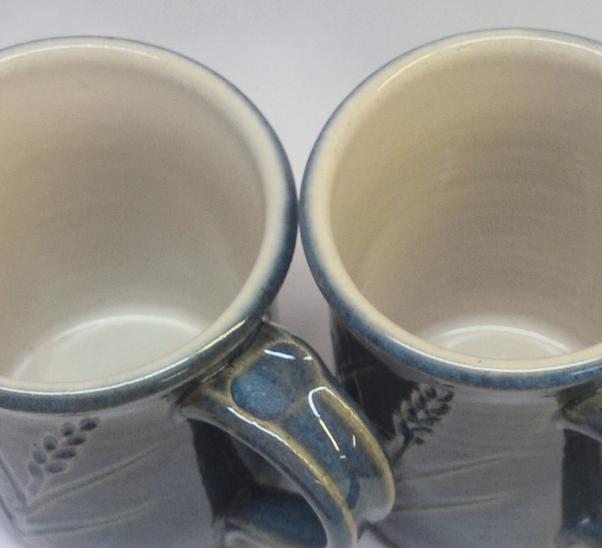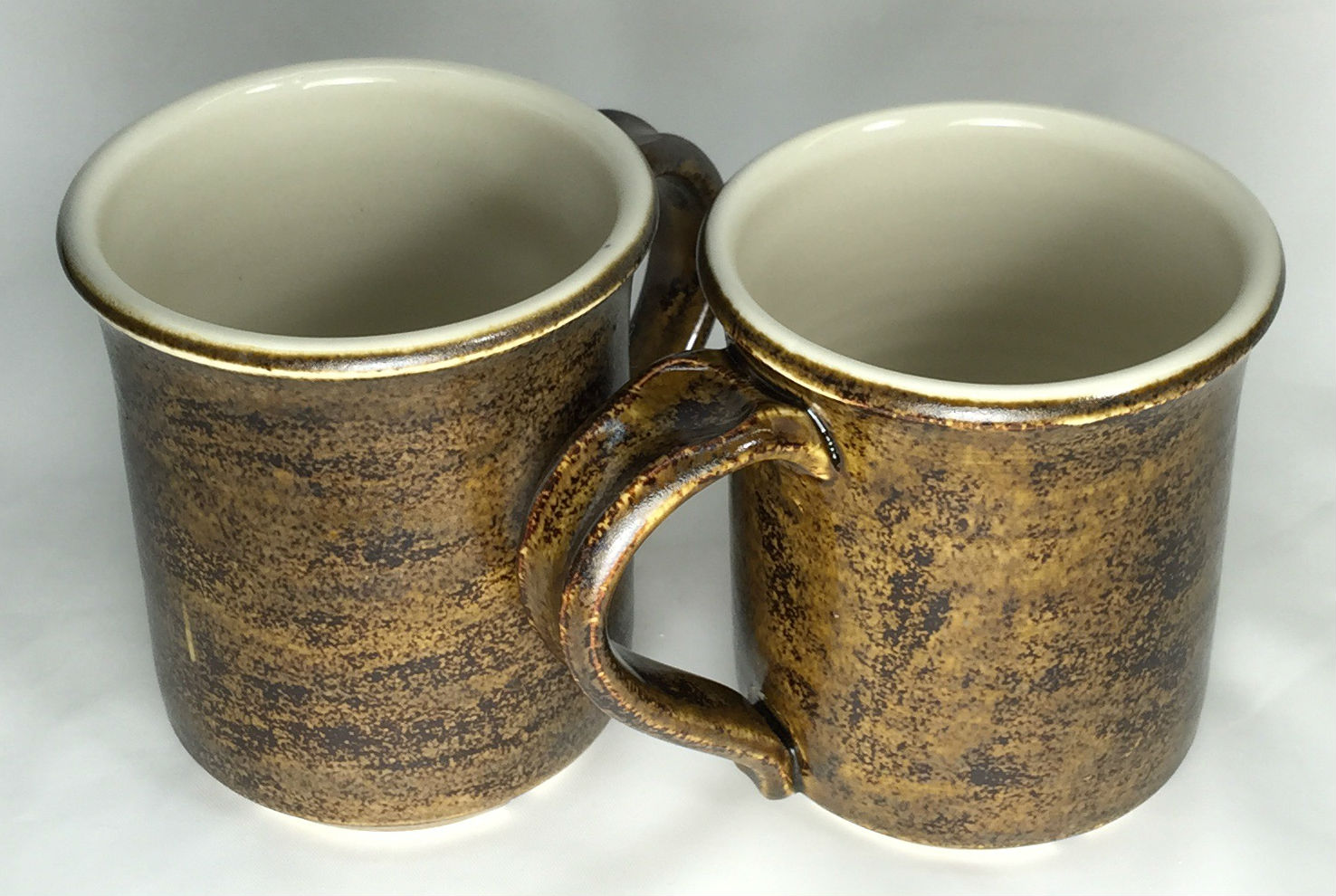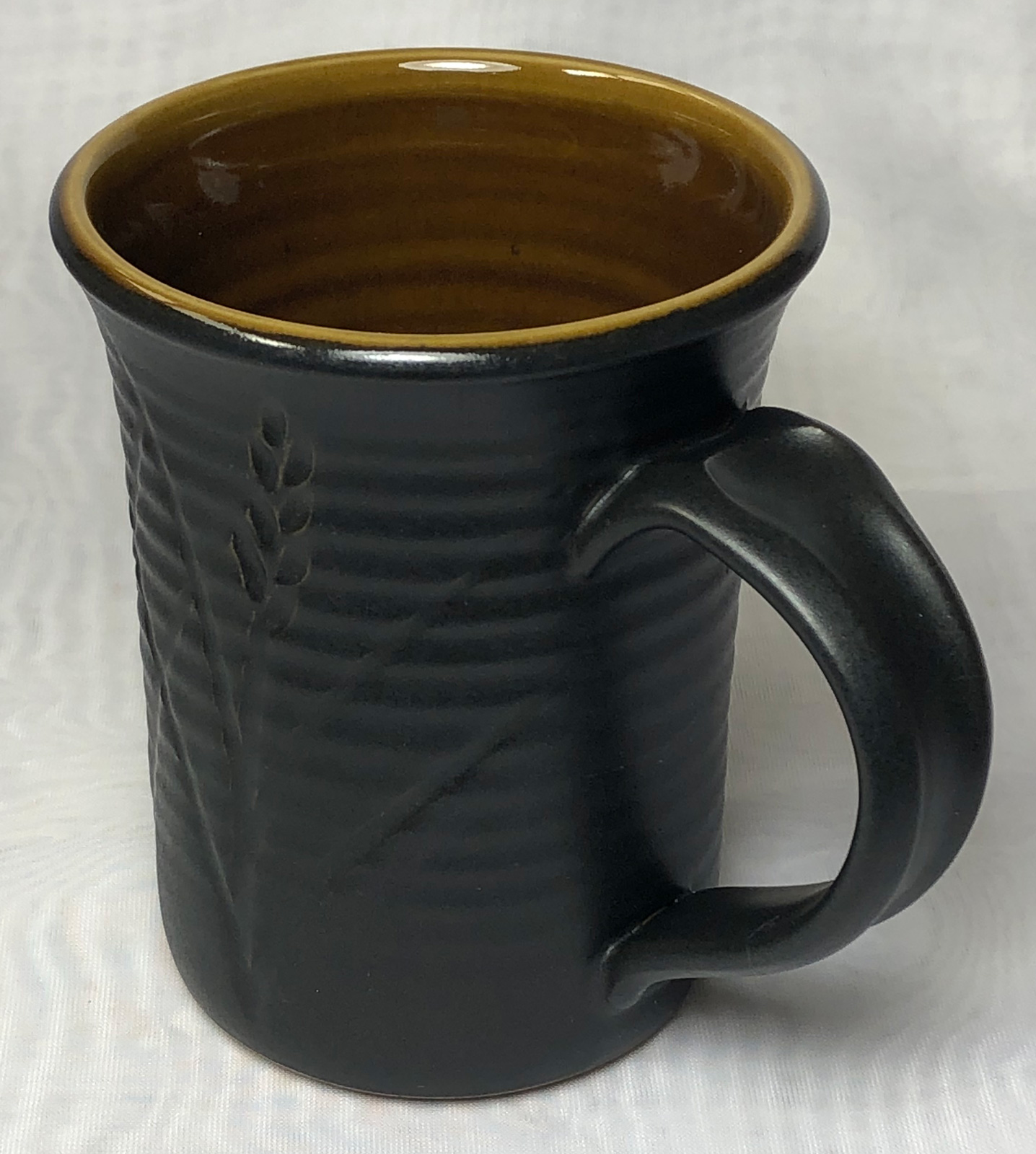| Monthly Tech-Tip | No tracking! No ads! |
Meet two glazes at the rim using wax emulsion. Why? How?
Reactive glazes (melt-mobile, crystallizing or heavily pigmented) are the least suitable for food surfaces because they have the potential to leach metals. Liner glazing ware is an excellent way to deal with this problem. Not only does this approach improve functionality but it can be aesthetically pleasing and practical in production.
This liner is GA6-B, a pottery glaze recipe we promote with confidence. Not only is it less likely to be leaching metals but also less likely to craze - this assures water tightness on non-vitreous bodies and eliminates any potential for bacteria growth in the cracks (especially if the body has porosity). Unfortunately, glazes that leach are also likely to stain and cutlery mark - these add more reasons why they are most often unsuitable for food surfaces.
The straightness of the dividing line is affected by both the application technique and the degree to which the two glazes bleed into each other and run. Read and watch our liner glazing step-by-step and liner glazing video for details on how to do this - it is practical for any potter or hobbyist (or even in production). And tap/click the picture above for other examples of this.
Related Pictures
Liner Glazing a porcelain mug
The process of applying a liner glaze to the inside of a piece (by pouring), applying wax emulsion up the top inside and over the rim (using a turntable and brush), removing the glaze up the outside to mid-rim and finally dipping the rim and outside into the other glaze.
A functional matte liner glaze is possible - with care.

This picture has its own page with more detail, click here to see it.
Ravenscrag G2928C matte liner glaze is on the insides of these mugs. Like our G2934 recipe, this matte glaze needs to be fired to a real cone 6 and fired in the C6DHSC drop and hold and then slow-cooled schedule. If cooled too slowly the surface could be too matte would be subject to cutlery marking (especially on the inside bottoms). If cooled too quickly it will be too glossy. When firings cool slowly just because they are tightly packed the degree of matteness can be tuned by blending in just enough glossy glaze to make the surface smooth enough to be functional while still matte enough to be attractive to the eye and the touch.
Commercial glazes on decorative surfaces, your own on food surfaces

This picture has its own page with more detail, click here to see it.
These cone 6 porcelain mugs are hybrid. Three coats of a commercial glaze painted on the outside (Amaco PC-30) and my own liner glaze, G2926B, poured in and out on the inside. When commercial glazes (made by one company) fit a stoneware or porcelain (made by another company) it is by accident, neither company designed for the other! For inside food surfaces make or mix a liner glaze already proven to fit your clay body, one that sanity-checks well (as a dipping glaze or a brushing glaze). In your own recipes you can use quality materials that you know deliver no toxic compounds to the glass and that are proportioned to deliver a balanced chemistry. Read and watch our liner glazing step-by-step and liner glazing video for details on how to make glazes meet at the rim like this.
Gunmetal black mug demos liner glazing:
Safe glaze inside, pigmented matte outside.

This picture has its own page with more detail, click here to see it.
The outside glaze is G2934Y cone 6 black. I use the C6DHSC slow cool firing schedule to get this degree of matteness in the black. The body is the natural MNP (Mother Nature's Porcelain), it vitrifies to zero porosity around cone 4 (yet is stable to cone 8). At cone 6 it produces incredibly strong ware and works well with these two glazes. The inside liner glaze is GA6-B (made using real Albany Slip rather than Alberta Slip in this case). Although the melt characteristics of these two glazes are so different they can be applied to meet in a perfect line at the rims of pieces. Food safety labelling is not what you think it is - do liner glazing to be safe.
G2926B cone 6 transparent liner glaze: Proven, reliable, durable

This picture has its own page with more detail, click here to see it.
While colorful and layered glazes on the outsides of pieces get lots of praise and glory, transparent or white glazes providing the functional surface on the insides of pieces often get little attention from potters. Really, what good is an attractive piece if the food surface is crazing, blistering, leaching or cutlery marking? Or if it converts the piece into a time bomb? This cone 6 liner glaze, G2926B, is an example of how I found a glaze, recognized its potential and then adjusted the recipe to resist crazing on our clay bodies, fire durable and leach resistant and act as a base to host colorants, opacifiers and variegators. I get the best fired results using the C6DHSC firing schedule and very good performance as a dipping glaze when the slurry is thixotropic. One of the reasons this recipe is so widely used is that it is well-documented, having a code number that Google indexes. Drinking from a mug having a quality and fitted functional surface and a nice crisp line dividing the outside and inside glazes instills pride in me as the maker. What is the outside glaze? It is the G2934Y matte base recipe plus 8% Mason 6027 stain. The clay is MNP which I make myself.
This GA6-B glaze is better than beer bottle glass

This picture has its own page with more detail, click here to see it.
Ceramic glazes are actually just glass. But they are not like bottle glass. The latter is formulated to work well in forming machines (harden quickly), melt and stiffen quickly, have low melt viscosity and resist milkiness and crystallization on solidification. The chemistries to accomplish this have adequate resistance to leaching and adequate durability for a single or few uses. A stoneware glaze melt needs to be much more viscous (to stay put on vertical surfaces). And, it must have a much lower thermal expansion (to match common clay bodies). And, it must resist crystallization more much (since it cools slowly). Fortunately, meeting these needs brings along big benefits: Greater durability, hardness and resistance to leaching. Common target formulas express typical oxide formulas of glazes. Stoneware glazes and bottle glass share a common trait: They have about the same amount of SiO2. But the similarity ends there, stoneware glazes have:
-High Al2O3. Three to five times more! It is the key oxide to producing durable glass. And it stiffens the melt (that disqualifies high levels from bottle glass).
-The same fluxes (CaO, MgO, K2O, Na2O). But they distribute very differently (half the CaO, half to one third the KNaO, much more MgO). Other fluxes like SrO, Li2O are also common.
-Low KNaO (which they call R2O). In glazes it produces crazing, 5% is a typical maximum. But bottle glass can have double or triple that (the high thermal expansion is not an issue and its cheap source materials supply lots of melting power).
-B2O3 melter. It is expensive but can be justified because the glaze is just a thin layer. Glazes at the low end of the stoneware range have 5% or more boron.
The ceramic bottles shown here are made from a dark burning stoneware, the glaze is GA6-B. On the left is the same glaze on a porcelain mug. For the above reasons this glaze is more durable and leach resistant that regular bottle glass.
Videos
Links
| Glossary |
Food Safe
Be skeptical of claims of food safety from potters who cannot explain or demonstrate why. Investigate the basis of manufacturer claims and labelling and the actual use to which their products are put. |
| Glossary |
Liner Glaze
Liner-glazing is a way to assure that your ware has a durable and leach resistant surface. It also signals to customers that you care about this. |
| Glossary |
Liner Glazing
Step-by-step to apply inside and outside glazes to a pottery mug and get them to meet at a clean line at the rim. |
| Materials |
Wax Emulsion
|
Got a Question?
Buy me a coffee and we can talk

https://backup.digitalfire.com, All Rights Reserved
Privacy Policy

